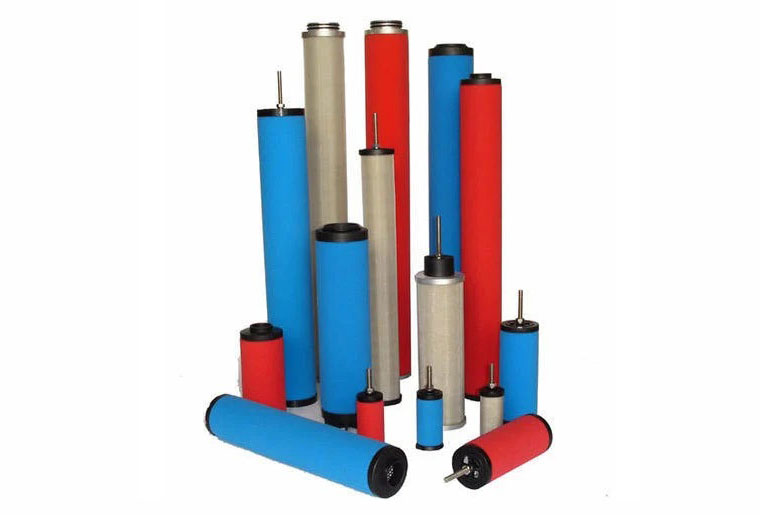
A compressed air filter is a vital component in compressed air systems, designed to remove contaminants and impurities from the compressed air before it reaches its intended application. Compressed air is widely used in various industries for pneumatic tools, equipment operation, process control, and other applications. However, the compressed air contains particles, moisture, oil, and other contaminants that can affect the performance and reliability of downstream equipment and processes. A compressed air filter helps ensure the quality and cleanliness of the compressed air, enhancing the efficiency and longevity of the system.
The primary function of a compressed air filter is to remove solid particles, water droplets, oil mists, and other contaminants from the compressed air. The filter typically consists of filter media, a housing, and inlet/outlet connections. The filter media can be made of various materials, such as synthetic fibers, activated carbon, or other specialized media, depending on the specific filtration requirements.
As the compressed air flows through the filter housing, the filter media captures and retains the contaminants, preventing them from entering the downstream system. The filter media's design and filtration rating determine the size and type of particles that can be effectively removed. It is crucial to select the appropriate filter media based on the desired filtration efficiency and the contaminants present in the compressed air.
Compressed air filters are available in different configurations to meet specific application needs. Some common types include particulate filters, coalescing filters, and activated carbon filters. Particulate filters remove solid particles, such as dust and debris, from the compressed air. Coalescing filters are specifically designed to capture and remove water droplets and oil mists by merging them into larger droplets that can be easily drained. Activated carbon filters are used to adsorb and remove odors, hydrocarbon vapors, and other gaseous contaminants from the compressed air.
Maintenance of compressed air filters is essential to ensure their continued effectiveness. Regular inspections and filter element replacements are necessary to prevent pressure drop, maintain filtration efficiency, and prevent contamination bypass. Some filters are equipped with differential pressure indicators or gauges to monitor the pressure drop across the filter element, indicating when maintenance or replacement is required.
Properly sized and maintained compressed air filters offer several benefits. They help protect downstream equipment from wear, reduce maintenance costs, and improve overall system performance. By removing contaminants, compressed air filters help prevent clogged or damaged pneumatic tools, valves, regulators, and other components. They also contribute to product quality in industries where compressed air is used for sensitive applications, such as food and beverage, pharmaceuticals, and electronics manufacturing.
In summary, compressed air filters play a critical role in maintaining the quality and cleanliness of compressed air in industrial applications. They remove solid particles, water droplets, oil mists, and other contaminants that can impact downstream equipment and processes. Compressed air filters enhance system performance, prolong equipment life, and ensure the reliability of pneumatic operations in various industries.